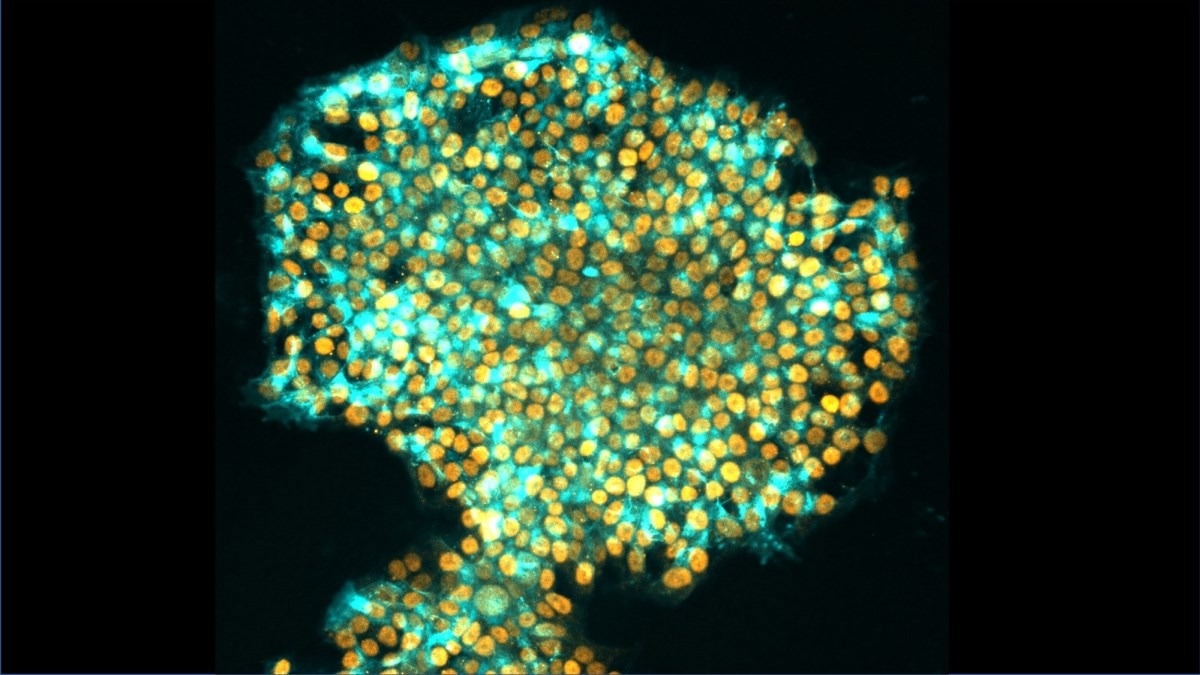Australian scientists have overcome a long-standing challenge in regenerative medicine in a remarkable discovery published in Nature. The team, led by Professor Ryan Lister of the Harry Perkins Institute of Medical Research and The University of Western Australia, and Professor Jose M Polo of Monash University and The University of Adelaide, developed a new method for reprograming human cells to more accurately mimic embryonic stem cells, with significant implications for biomedical and therapeutic applications.
 Human iPS cell. Image Credit: Jia Tan, Polo laboratory
Human iPS cell. Image Credit: Jia Tan, Polo laboratory
In the mid-2000s, it was revealed that non-reproductive adult cells of the body, known as ‘somatic’ cells, could be intentionally reprogrammed into a condition resembling embryonic stem (ES) cells, which can subsequently create any cell of the body.
The ability to reprogram human somatic cells, such as skin cells, into these so-called induced pluripotent stem (iPS) cells provided a means of producing an essentially limitless supply of ES-like cells, which have widespread applications in disease modeling, drug screening, and cell-based therapies.
However, a persistent problem with the conventional reprograming process is that iPS cells can retain an epigenetic memory of their original somatic state, as well as other epigenetic abnormalities. This can create functional differences between the iPS cells and the ES cells they are supposed to imitate, and specialized cells subsequently derived from them, which limits their use.”
Ryan Lister, Professor, Harry Perkins Institute of Medical Research
Professor Jose Polo, who also works at the Monash Biomedicine Discovery Institute and the Australian Regenerative Medicine Institute, explained that they have now developed an innovative technique called transient-naive-treatment (TNT) reprogramming that imitates the reset of an embryonic cell’s epigenome.
This significantly reduces the differences between iPS cells and ES cells and maximizes the effectiveness of how human iPS cells can be applied.”
José M. Polo, Professor, Monash University
Dr. Sam Buckberry, a computational scientist from the Harry Perkins Institute, UWA, and Telethon Kids Institute and a co-first author of the study, said by examining how the somatic cell epigenome changed throughout the reprogramming process, they were able to identify when epigenetic aberrations appeared and developed a new epigenome reset step to prevent them and erase the memory.
The newly discovered human TNT-iPS cells—both molecularly and functionally—are far more similar to human ES cells than those created via standard reprogramming, according to Dr. Xiaodong Liu, a stem cell scientist who also led the research.
The iPS cells created using the TNT approach developed into many other cells, such as neuron progenitors, better than the iPS cells created using the traditional method, according to Dr. Daniel Poppe, a cell biologist from UWA, the Harry Perkins Institute, and co-first author.
Jia Tan, a student at Monash University and a co-first author, praised the team’s TNT approach as brilliant.
It solves problems associated with conventionally generated iPS cells that if not addressed could have severely detrimental consequences for cell therapies in the long run.”
Jia Tan, Study Co-First Author and Student, Monash University
According to Professor Polo, more investigation is required to completely grasp the specific molecular pathways causing the iPS epigenome abnormalities and their repair.
Lister concluded, “We predict that TNT reprogramming will establish a new benchmark for cell therapies and biomedical research, and substantially advance their progress.”
Source:
Journal reference:
Buckberry, S., et al. (2023). Transient naive reprogramming corrects hiPS cells functionally and epigenetically. Nature. doi.org/10.1038/s41586-023-06424-7